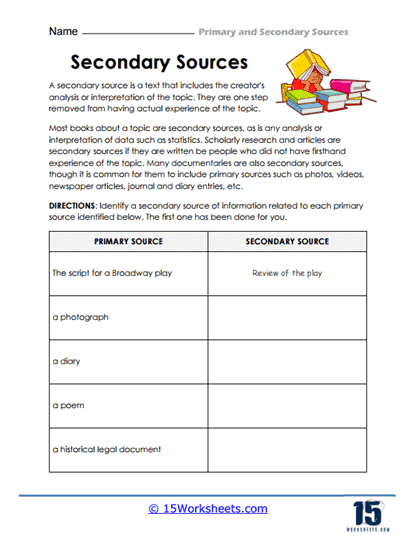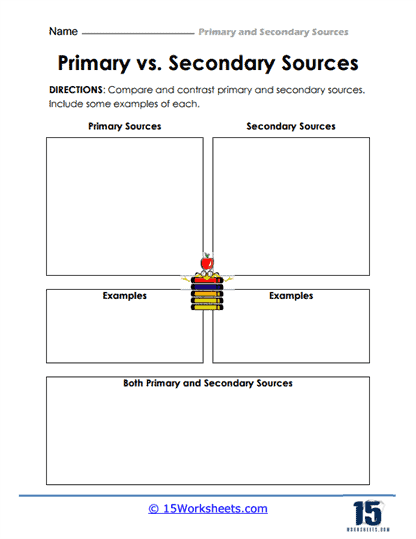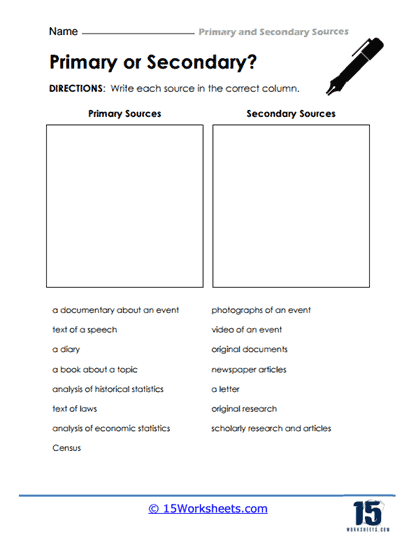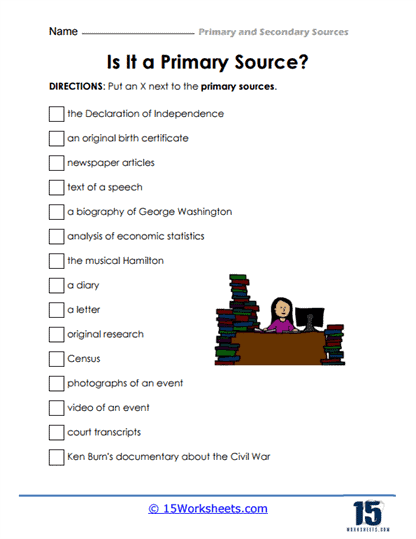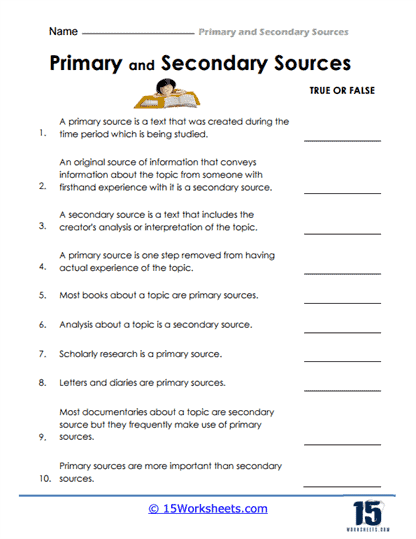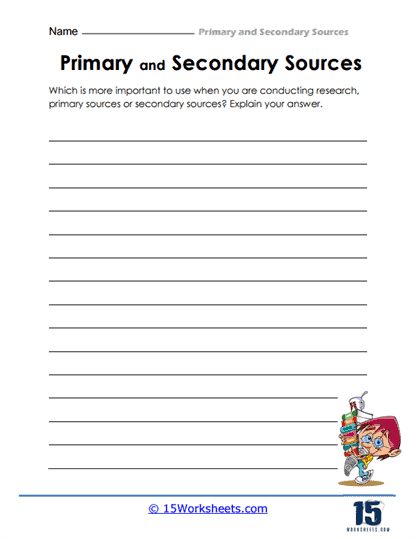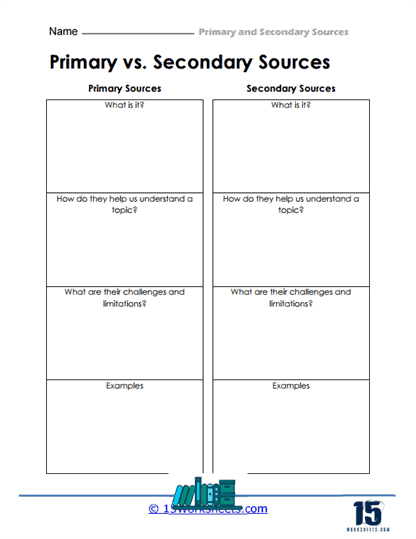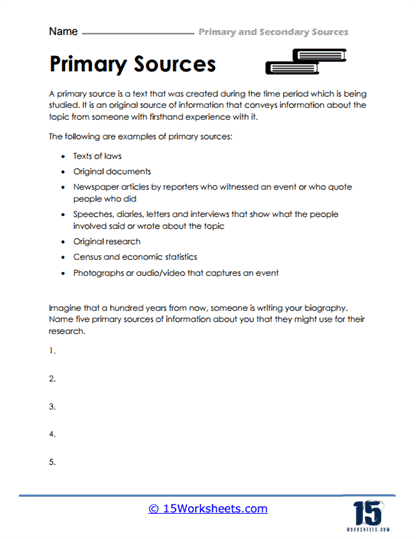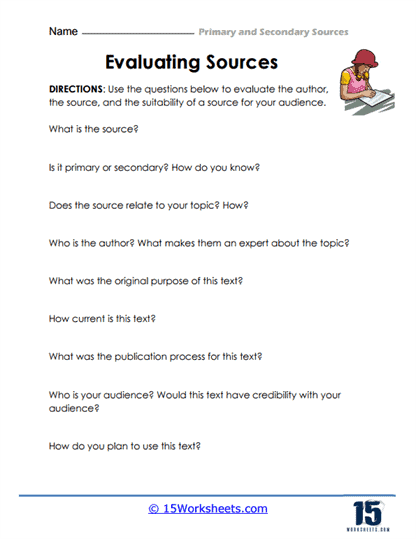Primary and Secondary Sources Worksheets
All About These 15 Worksheets
This series of 15 worksheets on Primary and Secondary Sources is designed to help students understand the distinction between these two types of sources in research and historical analysis. Primary sources are firsthand accounts or original materials from a specific time period, while secondary sources provide interpretations or analysis of primary sources.
These worksheets provide students with opportunities to explore examples of primary and secondary sources, identify their characteristics, and develop critical thinking skills when evaluating and utilizing sources in their academic work. By engaging with these worksheets, they can enhance their research skills, improve source analysis, and develop a deeper understanding of historical events and perspectives. Through these worksheets, students will:
- Identify examples of secondary sources related to given primary sources, demonstrating knowledge on the distinction between the two;
- Understand the definition of Primary and Secondary Sources and recognize their significance;
- Compare and contrast primary and secondary sources and identify their challenges and limitations;
- Assess the reliability and bias of both primary and secondary sources, encouraging them to develop critical thinking skills when analyzing sources;
- And learn how to effectively integrate and cite sources in academic writing, ensuring they understand the proper use of these sources to support their arguments and analysis.
This series of worksheets on Primary and Secondary Sources equips students with the knowledge and skills necessary to distinguish between these two types of sources in research and historical analysis. By engaging with examples, analyzing characteristics, and evaluating source reliability, they can develop critical thinking skills, improve their research capabilities, and gain a deeper understanding of historical events and perspectives. Overall, these worksheets provide valuable resources for students to enhance their source analysis and utilize primary and secondary sources effectively in their academic work.
What Are Primary and Secondary Sources?
Primary and secondary sources are two types of resources used in research and historical analysis. Each serves a distinct purpose in contributing to our understanding of a topic or event.
Primary Sources
Primary sources are original, firsthand accounts or records of events, ideas, or objects. They are created by someone with direct experience or knowledge of the subject being studied. Primary sources can be written, oral, visual, or physical artifacts. Examples of primary sources include:
- Diaries, journals, or personal letters
- Speeches and interviews
- Photographs and artwork
- Original research articles presenting new data or findings
- Government documents, such as birth certificates, census records, or legislation
- Newspaper articles written at the time of an event
- Autobiographies and memoirs
- Audio or video recordings of events or interviews
- Historical artifacts, such as clothing, tools, or weapons
Secondary Sources
Secondary sources are interpretations, analyses, or summaries of primary sources or events. They are created by someone who did not directly experience the event or subject being studied. Secondary sources provide context, commentary, or evaluation of primary sources and are typically created after the event or time period being studied. Examples of secondary sources include:
- Books or articles analyzing or interpreting historical events or primary sources
- Biographies (unless written by the subject themselves, which would be an autobiography)
- Review articles that summarize or synthesize multiple primary research studies
- Documentaries or films that provide analysis or commentary on historical events
- Encyclopedias or textbooks providing overviews of a topic
- Critiques or analyses of artwork, literature, or other creative works
In research and historical analysis, both primary and secondary sources are essential for gaining a comprehensive understanding of a topic. Primary sources offer direct, firsthand evidence, while secondary sources provide context, interpretation, and analysis, helping researchers form a well-rounded perspective on the subject.

